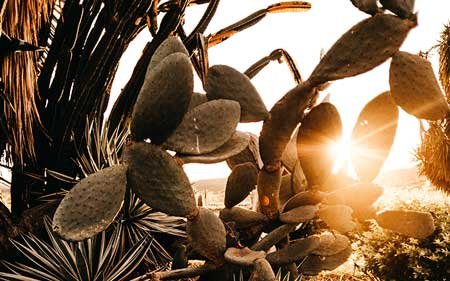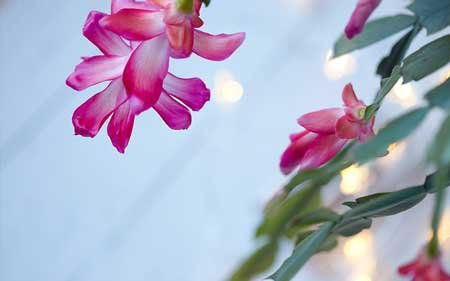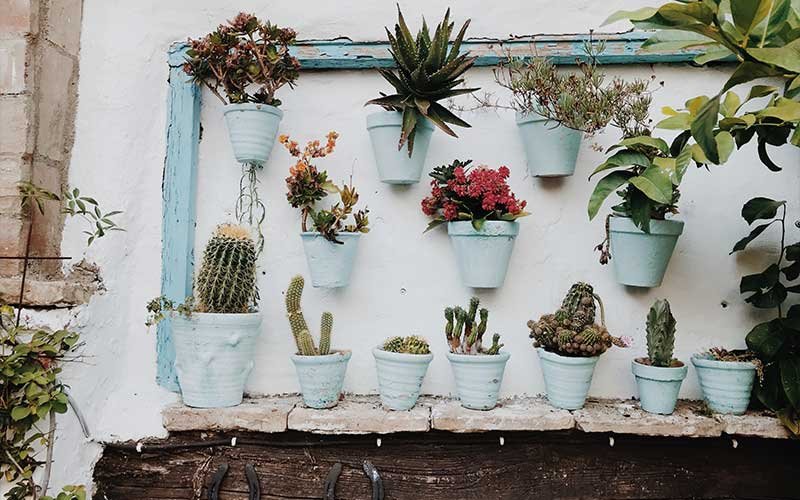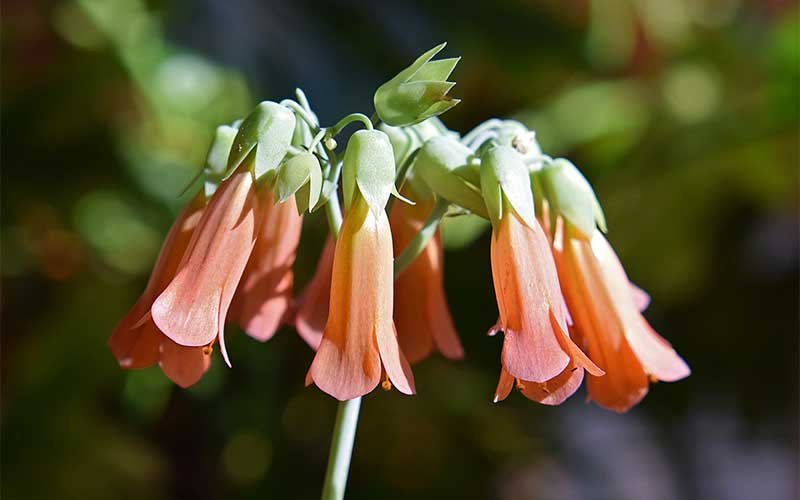
How to Deal With Cactus Etiolation

What is Etiolation?
Etiolation is a condition of plants grown in areas that do not get enough sunlight. Stretchy stems and stunted growth often characterize it and if your plants have a lighter or pale color than usual. Etiolation does not only occur in succulents and cacti but in other plant groups as well.
When a cactus develops etiolated growth, this means the plant is not getting enough sunlight to grow properly. An etiolated plant grows tall and stretches towards the light source. It also becomes paler. To fix an etiolated cactus you have to move it in a place where it can receive better light. Cactus prefers getting more direct sunlight. If you are planning to grow one indoors, you can place it in a south-facing window so the plant can grow properly.
If you want to fix an etiolated cactus or succulent, you can transition it to a better lit area or even outdoors. Make sure to do this process gradually, If a cactus is not used to receiving lots of sunlight and then suddenly receives full sun exposure, it can cause the plant to have a sunburn.
Even though fertilizer salespersons often tell us that plants need fertilizer because it is “plant food”, plants get their food from the sun. Plants need sunlight to undergo the process of photosynthesis; this is the process that produces glucose as well as oxygen from carbon dioxide, water, and other organic minerals.
Etiolation is a plant’s normal response when it is deprived of sunlight. When exposed to this unfavorable condition, a plant’s normal reaction is to grow rapidly towards the direction where it can have the maximum amount of sunlight exposure. This often results in the plant to become bent, stretched, and thin. Plants appear weak and pale because almost all their energy is spent trying to grow towards the direction of the light source than they normally do.
Etiolation occurs mostly to plants that are grown indoors. This happens because indoor spaces are usually poorly lit and if you are planning to grow cactus inside your home, you must provide it with enough amount of light so they can grow properly. Cacti love the full sun, that’s why they normally thrive in desert-like conditions. If you’re growing succulents in gardens and outdoors, plants that are grown in shaded areas or blocked from sunlight for long periods will most likely suffer from etiolation.

What are the Symptoms of Etiolation?
Etiolated plants will be the opposite of plants with vibrant green color. There will only be a small amount of chlorophyll formed so it will lead to a pale green color. Chlorophyll formation depends on the amount of light the plant is exposed to. The plant appears weak as well because of limited photosynthesis.
Here are some of the symptoms of etiolated cactus:
1. Pale, weak, elongated growth – It is the most common sign that a plant is not getting enough sunlight exposure. The cactus grows thin stems and widely-spaced leaves.
2. Bent towards a light source – Plants bend towards the light source especially if kept in shaded areas that do not get enough sunlight. Instead of growing normally, a cactus deprived of sunlight will lean excessively towards a light source.
3. Unusually tiny leaves – When plants do not get enough sunlight, they will produce new leaves that are smaller than the existing ones.
4. Rapid growth at an unusual rate – The affected cactus will grow rapidly towards the light source. All their energy will be used to grow at a fast rate, this is evident in plants with extremely long bodies and the leaves have wide spaces apart from each other.
5. No blooms or barely flowering – Cacti and other succulents need full sun exposure to bloom flowers. When you have a flowering succulent but barely blooms, or does not bloom at all, that means it is not getting enough sunlight exposure. Cacti and other succulents need at least 6-8 hours of sun exposure every day.
6. Loss of leaves – Plants normally shed old leaves, but if your succulent leaves are falling off frequently, you can suspect that it is not getting enough sunlight. This occurrence is not normal for indoor plants.
7. Root or stem rot – Plants that do not receive enough light will not be able to absorb water properly and the soil will remain moist which causes the succulents prone to root or stem rot.
How to Fix Cactus Etiolation

Give the cactus plant more light
This is the most important solution; you can bring your succulent to a well-lit area but make sure to do it gradually as it can cause the plant to have a sunburn. Give the cactus an extra 30 minutes of more light daily and keep a close watch on it. If the plants stop become “leggy” or stretchy but some of the leaves are pointing down, continue to add more sunlight exposure until it stops showing signs of stress.
You can adjust your plant’s exposure from full shade to partial sun and then finally full sun exposure in a few weeks. Do not forget to rotate cactus in planters every week to allow even sun exposure and avoid etiolation. If growing the cactus indoors, you can use grow lights like this.
If the plant suddenly has brown spots, that means the plant is sunburnt and the transition to gradual sunlight exposure must be slowed down accordingly to solve the issue.

Cut the stretched out part of the cactus to use it for propagation
After the plant has reverted to its previous healthy growth and you have made sure to provide it with enough sunlight exposure. For its visual effect, you can fix the affected plant by cutting the etiolated part and growing a new plant from that cutting. You must use garden gloves, long-handle tongs, and pruning shears.
The cutting will grow roots in approximately 2-3 weeks after propagating it. After it has established, you can plant it in a terracotta pot. The base plant will grow new offshoots from the cutoff stem as well. By doing this method, you can correct the affected plant’s growth and make it grow properly and get more plants from the etiolated part. If you need more information on how to propagate succulents, make sure to check out our website.

How to Prevent Cactus Etiolation
1. Reposition your cacti and place them in an area that receives full sun. You can choose a large uncovered window facing south. You must at least allow the plant to receive a minimum of 4-6 hours of direct sunlight every day. If your cactus is grown outdoors, you must place them in an area that receives full sun and without any obstruction. Do not overdo it as too much sun can also cause sunburn.
2. Use grow lights. Grow lights can be used for cacti grown indoors. These artificial light sources will provide the photosynthesis-specific wavelengths needed by the plant to grow properly. Grow lights are a must-have for those who live in areas with a lot of cloudy days, long winter months or short periods of daylight. You can place the grow lights above the cactus to allow the plant to grow straight and not become “leggy”.
When your cactus plant is showing signs of etiolation, you can cut off the top during springtime; the plant will produce more stems with a normal shape. Cactus plants grow in intense full sun. During wintertime, you can allow your cactus to experience winter dormancy to prevent it from growing.

Cut the stretched out part of the cactus to use it for propagation
After the plant has reverted to its previous healthy growth and you have made sure to provide it with enough sunlight exposure. For its visual effect, you can fix the affected plant by cutting the etiolated part and growing a new plant from that cutting. You must use garden gloves, long-handle tongs, and pruning shears.
The cutting will grow roots in approximately 2-3 weeks after propagating it. After it has established, you can plant it in a terracotta pot. The base plant will grow new offshoots from the cutoff stem as well. By doing this method, you can correct the affected plant’s growth and make it grow properly and get more plants from the etiolated part. If you need more information on how to propagate succulents, make sure to check out our website.
Legacy Gardens Protective Gloves for Women & Men
DRAGONN Premium Set Stainless-Steel Locking Kitchen Tongs
Mockins Professional Heavy Duty Garden Bypass Pruning Shears
Natural Terracotta Round Fat Walled Garden Planters with Individual Trays
- natural terra cotta material. Each measures 3.25″ H x 4.5″ diameter or 3.5″H x 5.25″ diameter with tray
- machine pressed, kiln fired
- hand inspected with a drain hole





































